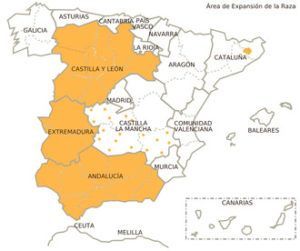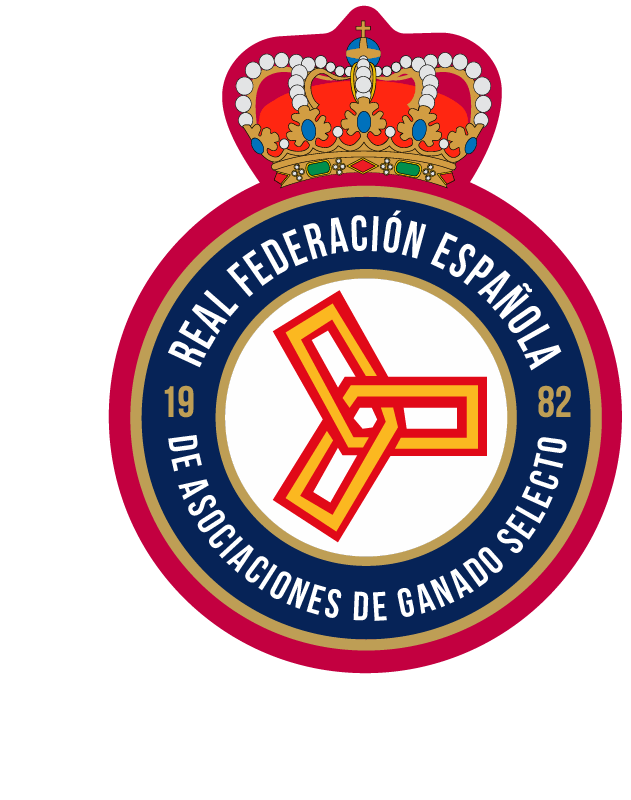GENERAL CHARACTERISTICS
Morphologically they are goats with a uniform blond coat, with variations ranging from light blond to dark blond, with short hair predominating, although animals with longer hair can be found forming raspil and calzon, especially in mountainous areas.
They have a triangular head with long but always horizontal ears and a profile varying from subconvex to straight. They may have a toupee, a goatee and horns which are normally spire-shaped in males, although in females they also appear in the form of an arch.
The neck is flat and long, broadly set on a developed trunk with a straight back and thoracic line and a rump tending to horizontality. The limbs are flat but strong and well plumbed.
It is an animal of sub-longline proportions, eumetric and with weights ranging from 45 to 60 kg in females and 60 to 75 kg in males. Its height at the withers varies between 55 and 70 cm. in bitches and 65 and 78 cm. in males
PRODUCTION CHARACTERISTICS AND EXPLOITATION SYSTEMS
The majority of farms are semi-extensive and family-run.
The average production of Malagueña breed goats, subject to Official Dairy Control, registered in the Stud Book of the breed, amounts to 210 days of lactation: 400.29 kg of milk in goats of first birth and 540.65 kg in goats of second and successive births. It should also be noted that there are records of individual goats that have produced more than 1,000 litres in one lactation. The average milk composition of the Malagueña goat is: Fat – 5.35%; Protein – 3.96%; Lactose – 4.60%; Dry Extract – 14.18%.
Despite being highly specialised in milk, the production and consumption of by-products such as Malaga Cheese and Malaga Suckling Goat, an animal reared on mother’s milk, slaughtered at 20 days of age and with a live weight of around 5 kg, is on the rise.
GEOGRAPHICAL DISTRIBUTION
It is most concentrated in Andalusia (especially in the province of Malaga), although it is also found in Extremadura and Castilla y Leon.

INFORMATION
 Tell us about your characteristics and needs so that we can offer you the solution that best suits your context. Contact us if you have any clarifications or suggestions for products or services that you need.
Tell us about your characteristics and needs so that we can offer you the solution that best suits your context. Contact us if you have any clarifications or suggestions for products or services that you need.
Presupuesto total: 543.404,60 euros. Cofinanciado UE al 80% por el Fondo Europeo Agrícola de Desarrollo Rural- FEADER y al 20% por el MAPA. La Dirección General de Desarrollo Rural, Innovación y Formación Agroalimetnaria (DGDRIFA) es la autoridad de gestión encargada de la aplicación de la ayuda FEADER y nacional correspondiente.
https://ec.europa.eu/info/eu-
Creación de una base y estructura de comercialización e internacionalización de material genético de razas puras españolas mediante análisis de la situación actual y elaboración de plan estratégico para la exportación. El objetivo es desarrollar un análisis estratégico de la internacionalización y desarrollo de estructura y protocolos de comercialización del material genético según demanda y requisitos de países objetivos para las razas participantes del proyecto y para el conjunto de la cabaña ganadera España. Organismo responsable de contenido: miembros del GO EXPORTGEN.
 Tell us about your characteristics and needs so that we can offer you the solution that best suits your context. Contact us if you have any clarifications or suggestions for products or services that you need.
Tell us about your characteristics and needs so that we can offer you the solution that best suits your context. Contact us if you have any clarifications or suggestions for products or services that you need.
Presupuesto total: 543.404,60 euros. Cofinanciado UE al 80% por el Fondo Europeo Agrícola de Desarrollo Rural- FEADER y al 20% por el MAPA. La Dirección General de Desarrollo Rural, Innovación y Formación Agroalimetnaria (DGDRIFA) es la autoridad de gestión encargada de la aplicación de la ayuda FEADER y nacional correspondiente.
https://ec.europa.eu/info/eu-
Creación de una base y estructura de comercialización e internacionalización de material genético de razas puras españolas mediante análisis de la situación actual y elaboración de plan estratégico para la exportación. El objetivo es desarrollar un análisis estratégico de la internacionalización y desarrollo de estructura y protocolos de comercialización del material genético según demanda y requisitos de países objetivos para las razas participantes del proyecto y para el conjunto de la cabaña ganadera España. Organismo responsable de contenido: miembros del GO EXPORTGEN.












